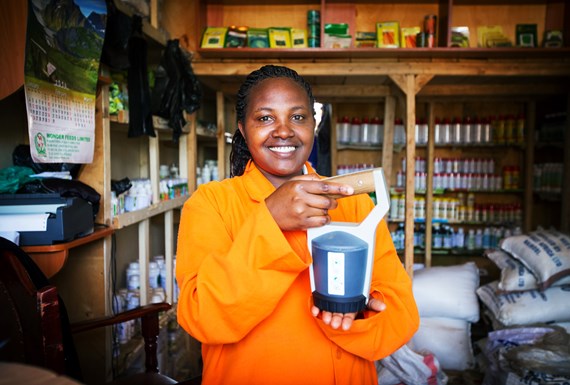A family owned farm in Thika is considered the benchmark in mixed farming as over 10 to 15 famer groups visit them every week to learn how they are able to operate several farming activities in a small piece of land.
The family of five; Kenneth Macharia, his wife and three children cultivate in less than half an acre land near Sports Club in Thika, Kiambu Country.
RELATED ARTICLE: Mixed farming immune farmer from severe losses
Kenneth Macharia who started fish farming, poultry and a dairy unit in his farm in 1999 after retiring as a technician from the Ministry of Transport, has turned the farm into a practical training centre where other farmers and experts come to learn how a small land can host many farming activities.
“I receive visitors every week and I share my experiences with them as a mixed farmer. Some churches from the area also bring youth to learn some of these practical skills in farming,” said Macharia.
“In June, I even received a group of farmers and their leaders from South Nyanza who had come on a series of agricultural events and bench marking in Nairobi and my farm was one of their destinations.”
Macharia has since registered with the Registrar of Society naming it Sky Blue Farmlands. This enables him to earn supply tenders of his agricultural produce.
RELATED ARTICLE: Mixed farming earns agripreneur double cash
Besides poultry, fishery and dairy farming, Macharia is currently running a yoghurt production plant within the same piece of land using his own milk to produce Highland Yoghurt. For the last six months, he has distributed it to the local shops and some areas in Nairobi such as Kawangware and Baba Dogo among others.
Although the heated political climate in the country has to some extent affected the yoghurt business, Macahria is not giving up. “I have won a supply tender with Kassmatt Supermarket which is good for business after the current political situation affected our supply in some areas in Nairobi.”
A litre of Highland Yoghurt goes for Sh160. The milk, processing process and the yoghurt itself has been certified by Kenya Bureau of Standards (KEBS) meaning the farm is operating a clean business.
RELATED ARTICLE: Father of hydroponics rakes fortunes with mixed farming
He advices young farmers to shy away from the fear of trial that many beginners in agribusiness suffer from ending up with a country with limited agriprenuers as compared to the population feeding on agricultural produce.
“I welcome the youth who want to learn and be trained for free. I am also thinking of starting admitting college students who would like to come for attachments and internships in my farm from next year on as many have been requeting,” said Macharia.
Write comment (2 Comments)

















